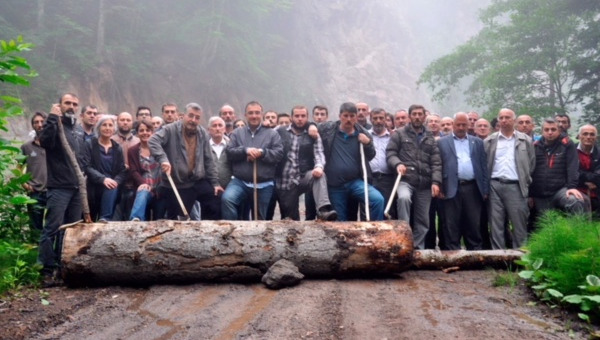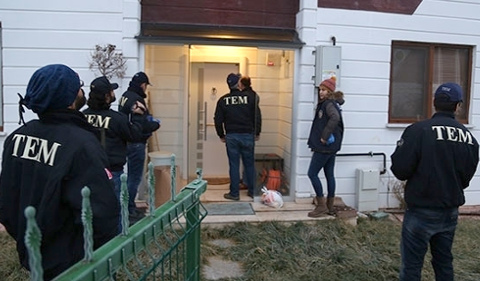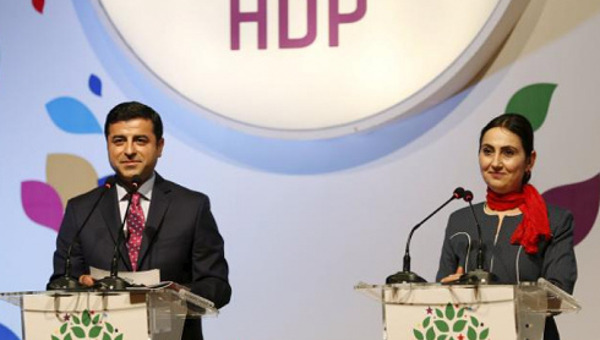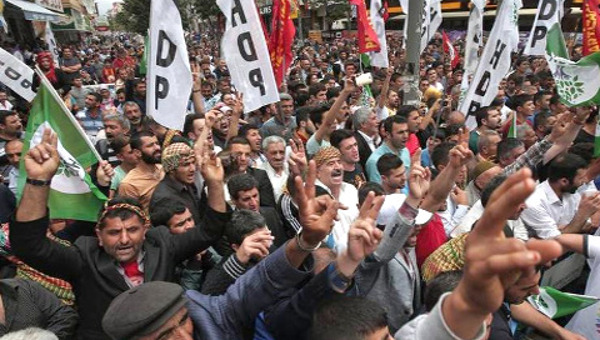The following interview is part of the www.sendika.org website continuing conversations on the class character, appearances, causes, and probable results of the revolt in Turkey. As well, there are considerations on the ‘institutionalizations’ of the resistance and conclusions that should be considered by socialists and the Kurdish movement.
This interview is with Yalcin Burkev, editor of NotaBene publishing in Turkey. He has written many articles on such topics as the necessity of a new social opposition, a socialist base movement, reformation of a new workers’ movement and precarious workers. He is the co-editor of (in Turkish): Historical and Theoretical Dimensions of Struggles to Rights (2010); Real, Destructive and Creative: Struggles of Youth in Turkey and the World.
He was interviewed on June 15 of this year by Ozay Goztepe, who is doing his Ph.D. at the Department of Public Administration, University of Mediterranean in Antalya. He is the editor of the book, Precariousness (2012), and is now editing a book about the June Revolt.
Translation assistance from Thomas Marois.
Ozay Goztepe (OG): The resistance that followed from the attack on Gezi Park gives the appearance of a revolt of the middle class rather than a class oppositional movement. What can you say about its causes and probable results?
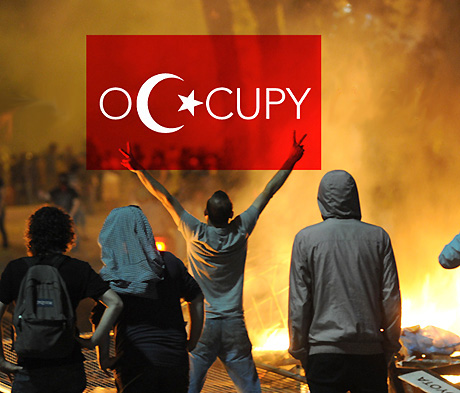
Yalcin Burkev (YB): The Gezi Park Resistance has been a challenging development. As in all historical revolt movements that erupt as a synthesis of very complicated causes, one should not give too much credence to simple explanations that claim to analyse it. Yes, it is also so for this event and for those who take it superficially by arguing that it is a “middle class revolt.” In particular this thesis has prevailed in the media, and it seems it continues to do so depending on the scenes, the humour in the slogans and graffiti, and the peaceful style of the actions.
Of course, as this resistance includes significant differences from the previous ones, it does not reveal the classical appearance of a worker revolt. Sure, one significant dimension of the event is related to the “middle classes,” that is with the petit-bourgeois. However, the middle classes leading the revolt are the losing ones, that is to say the proletarianized middle classes. These components of society reflect the reactions of a social stratum that is, indeed, new to the working-class. While these people are lawyers, doctors, pharmacists, engineers, graphic artists, designers, academicians, teachers and so on that we meet daily, they have been nonetheless rapidly losing their intermediate class characteristics and becoming members of the working-class.
On the one hand, this is because these “middle class” workers have been dequalified in their occupations and alienated from their job due to neoliberal policies. On the other hand, these same middle-class workers have become included in a wage earner category under conditions of “precariousness” and have lost their (higher) level of prosperity permanently. That is, their “loss” is not a temporary situation related to the crisis but a permanent change in their social class position.
The “proletarianization of the middle classes” should be considered chief among those critical events that trigger revolt movements in the era we are passing through. The roles played by the unemployed young people in Egypt (especially in 2011) and Tunisia have also reflected this historical process just as, just before them, the European university student protest movements opposing the commodification of education that erupted in 2011.
The basic factor underlying the experience of these “middle class” reactions as a historical wave is the transformation of the petit-bourgeois (or in the trendier term, the “middle classes”) into a mass of “losers” in many countries. The middle classes expanded with the widening of particular sectors due to the artificial economic expansion caused by financialization in the 1980s and 1990s. Since the 1999 crisis, but especially after the 2009 global economic crisis, this picture began to change rapidly. These loser masses are becoming poorer, dispossessed, and proletarian. They are well-educated young people that have grown up according to prevailing consumption standards with the hope of an ever-higher level of prosperity.
However, they can hardly go on with their daily lives without depending on the support of their parents. Yet they don’t accept themselves as a member of the proletarian class. They mostly do not think and behave with respect to classical proletarian patterns. Therefore, they can divert to the most short-cut reactions to escape from this new situation. These factors underlie the inclination of the urban “middle classes” in Turkey to the left, to social democracy, and particularly to Kemalist nationalism.1
The above mentioned objective class behaviors underlying the whole process have not gained a direct political appearance. Such processes are mediated by particular situations before gaining a political appearance. For instance, the peoples’ reactions to the general process of proletarianization in Turkey turns out to be a secular reaction because the associated neoliberal policies have been carried out by “the moderate Islamic AKP.”2 And while the AKP has been creating its own middle class, it too has been eliminating the traditional “middle classes” and young “middle class” candidates by pushing them onto the side of losers.
That is to say, “AKP staffing,” or the filling of state staff positions with its own supporters, is a basic factor in the rise of this new (Islamic) middle class. Thus, the “proletarianization of the middle class” in Turkey has been experienced in a quite original way. There is a large mass of losing secular middle class people in spite of the rising small mass of Islamic middle class people, and this polarizes on an “Islamism-secularism” axis.
Naturally the new labouring masses, that became impoverished and precarious due to neoliberal policies and who do not associate themselves with the Islamic social network, form maybe not the leading force but one of the main dynamics in the resistance. Moreover, the reactions of the “Alevis”3 who feel excluded and under threat in general (and their particularly heated reactions of the Arab Alevis – in Turkey – due to hostile aggresiveness of AKP directed to Syria) should be noted as identity-derived responses have added to the class dimension of the revolt. And, of course, the leading roles of women inside every political community and their mass contributions in general have been considerable. Their contribution has been a significant defense of freedom and a reflex against oppressive, conservative tendencies.
As a matter of fact, all the “class and identity-pivoted” issues have blended and emerged as a freedom struggle against an almost dictatorial regime. This freedom struggle has received support from various communities who likewise feel politically, socially, and also economically oppressed. That the uprising erupted also reveals the class linked policies. The trigger to the uprising was an expression of the accumulated reactions toward “urban transformation and rentier” policies. That means it was a reaction to one of the leading sectors of the neoliberal policies.
Briefly, the problem is basically class-based. The reactions are against neoliberalism mixed with Islamic fundamentalism, and it can never be handled as a static “middle class” behavior.
It is too early to make comprehensive explanations about results of this outburst before the process comes to an end. Though, whatever the results are, it is certain that the construction of politics only along the policy axis of the ruling class, which has been valid since 1980, came to an end. That is, (in football terms) a single-goal match is over and a new platform for a new working-class movement to be involved in politics has been formed depending on its reconstruction. Further, the image of political “stability” that has been drawn by AKP (or the ruling classes) for the last ten years has been ended irreversibly.
Naturally the involvement of labour and the oppressed will not appear in its most developed form, but we will witness many small or large spontaneous social outbursts. The current experiences are certainly a “revolutionary situation” in classical “objective terms,” however “subjectively” it lacks sufficient power as it corresponds to the reestablishment and reconstruction of the labour movement.
For this reason, if we were to assess these events in a historical perspective, it would be meaningful to compare them with the 1830 uprisings and 1848 revolutions reflecting the first periods of the formation of the working-class movement, instead of comparing them with 20th century revolutions, like 1905, 1917 and so on, where the working-class movement was organized/formed.
OG: What can be done for the institutionalization of the resistance and the establishment of a dual power status?
YB: For dual power, the resistance needs to capture a locality continuously (at least for a period). For example, the occupation of urban squares was just such a situation. It lasted for a short time, and now it continues in different forms like the park forums.
Even within this short-lasting Gezi Park model – which broke down existing political polarizations and put forth the possibility of another world, having got its attraction from an enormous wealth of action styles and especially “direct democratic” methods of decision-making – is a sample of a new type of social opposition in the new period. However, it is hard to say if the depth of this method could be appreciated thoroughly today in many cities, especially in places other than Gezi Park in Istanbul. It seems especially characteristic to manage the situation by applying to pragmatic and temporary alliances instead of developing “direct democracy” methods.
So the Gezi Park Model should be discussed and disseminated with regard to its whole depth and complexity. Again the labour arm of the process moves forward quite slowly and in fragments. The internal dynamics of the social opposition also moves forward problematically. Instead of trying to overcome at the level of governing forces and fighting continuously with the related conflicts, one should try to spread and deepen the Gezi Park Model particularly at its base, that is, in localities and in workplaces.
OG: What are the lessons that the socialist left and the Kurdish Movement need to take from the resistance?
YB: Until now the great masses have felt the possibility of creating another platform or that another world is possible alongside the testing of democratic ways to reach such goals. This is a magnificent achievement. It means that the masses have felt the possibility of surmounting existing political polarization. However, for the process to acquire more permanent forms, the social opposition needs to face its basic weaknesses.
Above all this involves its inability to overcome the polarization between Kemalist nationalist dynamics and the Kurdish Movement. It can’t be expected that these segments simply come together. Still it has been striking the ability to melt such sensitivities into the same pot in opposition to the neoliberal dictatorship, and this is critically important. This ability is the basic magic of the Gezi Model.4
Still, let us imagine for a moment that the Kurdish Movement, the PKK, participated actively and extensively and let us consider how great the results its effect could achieve. Let us conceive of what a difference could be brought to the country by a resistance that spreads to all Kurdish cities and also includes the Kurds in the West. Of course, there would arise a series of objections about its impossibility and probable negative results.
However those who might express such negativities should consider that the polarizations among the oppressed could be surmounted in the simplest and the most persistent way, which is through social struggle. Of course this potential would signify a critical lesson and, from the perspective of struggle, new possibilities for all oppressed peoples. And, of course, it would be necessary to review retrospectively the ways taken until now (so as to pave the way to the future).
It is possible to draw a series of noticeable lessons from this wave of revolt for all arms of the social opposition.
First, it’s been strikingly evident that the hegemons of the nationalist foci had a rightist mentality whereas those masses who had nationalist sensitivities, especially the poor and low-middle income groups, had anti-capitalist reactions. For example, to help pass through this period Dogu Perincek (the leader of Workers’ Party, the IP) conceded to an ‘in-order’ situation (or relatively conservative approach) by proposing a “temporary national government” on the basis of a “IP-CHP-MHP”5 coalition. Some segments with strong nationalist sensitivities, particularly those of CHP mass base, who acted together with the left (and even with some Kurdish actors in localities) exhibited an ‘anti-capitalist’ inclination.
So while the CHP administrative committee adopted a restrictive position by respecting the sensitivities of capital via a “common sense” governmental mentality, the CHP mass base exhibited a more radical inclination. To be sure all oppositional segments need to act in consideration of this real situation. Just as these segments cannot be left to right-nationalist or liberal leaderships, so too can they not be left to leftist chattering like “join us, we are telling you the right thing to do.” These problems should be met bravely in order to seek solutions in the interests of the mass base mobilizations.
Secondly, the left should adopt an attitude enabling itself to break down its own existing clichés. The social dynamism has brought an opportunity for the left to face its own bureaucratic habits. These habits caused the left to engage in too meagre of targets in too restrictive and stereotypical a way, all of which was far from the dynamism, militancy, and comprehensiveness of the movement. This opportunity requires the left to undertake a radical review of its style, program, organizing, and perspectives on struggle.
In this respect, the Gezi Park Model has led to various creative actions and direct democracy practices (taking decisions via forums, determining group attitudes after actual in-group discussions, and so on). Furthermore, it was extremely important that the Gezi Resistance managed to build the pluralism that the left and left social opposition could not achieve before. It was equally important that the oppressed segments could get into contact with each other in a positive and interactive way.
Third, the Kurdish National Movement has had to think over its problems derived from its failure to confront the pressures of liberalism on itself. As is known and for the time being the Kurdish National Movement follows a policy based on “international opportunities” and bargaining with the hegemons. On the other hand, in Turkey where the most populous and the most dynamic mass of Kurds live, the Kurdish Movement showed a hesitant, leery, and distant attitude toward this historically significant public movement. The reason being that solidarity could harm “the peace building process and expansion that they have been carrying out with AKP.”
To me, the Movement should not ignore the hesitant attitude taken but should seriously face up to its causes while analyzing the results and lost opportunities. This cannot be solved solely by correcting tactics. The Kurdish National Movement should draw lessons from the goings-on during June and the Gezi Park experience like the rest of us.
Lastly, note that the Gezi Park Resistance (or the June Revolt) transformed into such a magnificent mass outburst and as a base movement by moving beyond all of the political actors, and how it has debilitated the power forces, and how it raised to consciousness its potential to become an alternative power. Evidently, as everything complements the other here, it should also be noted that struggle being a “civil resistance” in the form of “civil disobedience” had a limited degree of violence and developed using legitimate defense methods.
This resistance pattern is specific to the current reconstruction phase of class movements. The governing powers, which have been militarized enormously, have become helpless against such rightful and legitimate actions. It should be emphasized once more how effective the results of this legitimate-militant way created in various countries. Just as militant struggle helped to open the way at every critical threshold, the creative actions supported and contributed to by the large masses complemented each other thus symbolizing the possibility of another world in relatively stable periods. •


